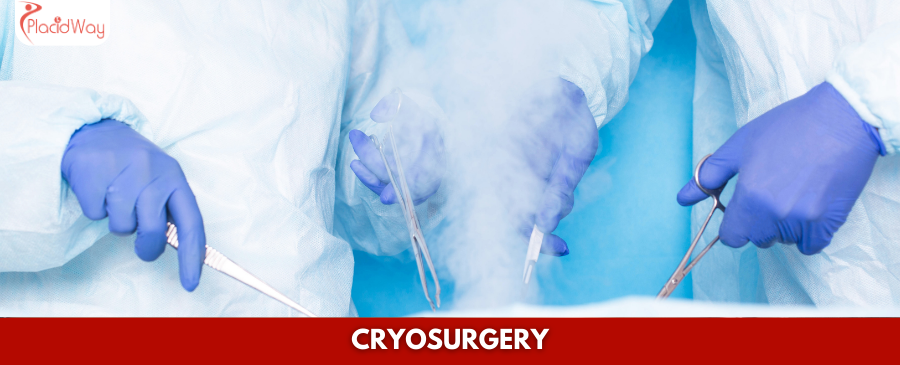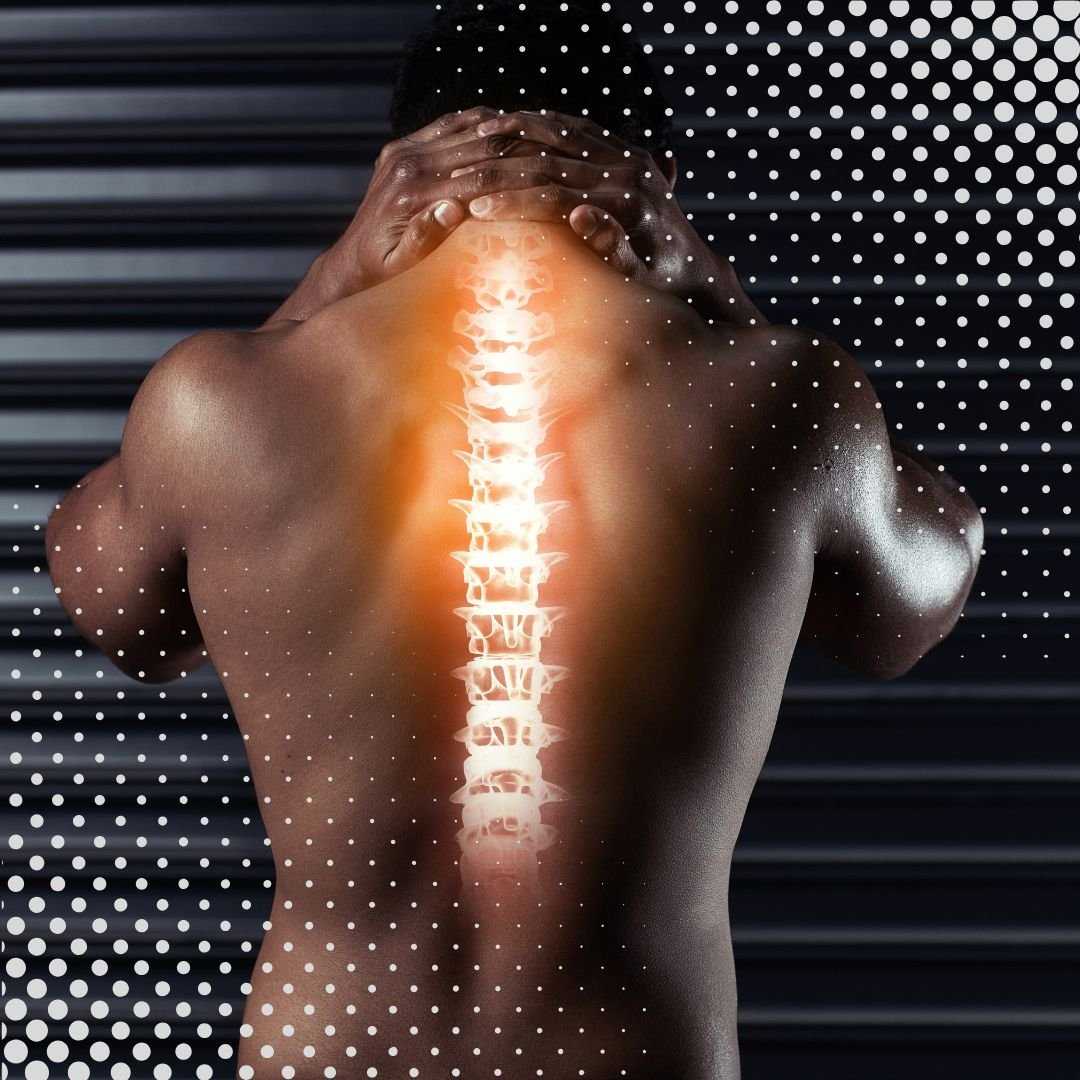
Discover Cryosurgery Abroad: A Gentle Path to Healing & Wellness
Facing a diagnosis that requires tissue removal can be daunting, and the search for the right treatment often leads to questions about effectiveness, recovery, and cost. If you're exploring options for conditions like skin lesions, certain cancers, or stubborn warts, you might have come across cryosurgery, also known as cryoablation. This innovative medical procedure uses intensely cold temperatures to freeze and destroy unwanted cells, offering a precise, often minimally invasive approach to healing.
For many, finding high-quality, affordable medical care is a global journey. Medical tourism provides an excellent opportunity to access advanced cryosurgery treatments in world-class facilities abroad, often at a fraction of the cost found in your home country. This comprehensive guide will walk you through everything you need to know about cryosurgery, from what it treats and how it works, to recovery expectations, potential costs, and why considering treatment overseas could be your best option for a healthier future.
Whether you're researching "cryosurgery for skin cancer," "what is cryoablation," or "affordable cryosurgery treatment abroad," we aim to provide clear, empathetic, and actionable insights to help you make an informed decision about your health journey.
What conditions are effectively treated by cryosurgery?
Cryosurgery is a versatile treatment method applied to a wide range of conditions, both external and internal. Its precision makes it particularly useful for destroying abnormal tissue while minimizing damage to surrounding healthy areas. Patients often search for specific applications:
- Skin Conditions: This is perhaps the most common application. Cryosurgery is highly effective for:
- Warts (Verrucae): Both common warts and genital warts respond well to freezing.
- Moles (Nevus) and Skin Tags: Benign growths that can be cosmetically bothersome.
- Actinic Keratosis: Pre-cancerous skin lesions caused by sun exposure, preventing their progression to squamous cell carcinoma.
- Basal Cell Carcinoma (BCC) and Squamous Cell Carcinoma (SCC): Early-stage, localized skin cancers can often be successfully treated with cryosurgery, especially in areas where preserving cosmetic appearance is important.
- Lentigo (Age Spots): Pigmented spots can be lightened or removed.
- Prostate Cancer: For localized prostate cancer, especially in men who are not candidates for traditional surgery or radiation, cryoablation offers a minimally invasive option.
- Kidney Tumors: Smaller renal tumors can be targeted and destroyed, preserving more kidney function compared to partial nephrectomy.
- Liver Tumors: Both primary and metastatic liver tumors, especially smaller ones, can be treated to reduce tumor burden or offer a curative option.
- Bone Tumors: Certain types of bone tumors, including osteoid osteoma, can be treated with cryoablation to alleviate pain and destroy the tumor.
- Cervical Lesions: Pre-cancerous lesions on the cervix can be treated, often preventing the development of cervical cancer.
- Retinoblastoma: A type of eye cancer in children can sometimes be treated with cryotherapy to save vision.
Understanding "what conditions cryosurgery treats" is the first step in determining if this procedure aligns with your needs.
What causes the conditions that cryosurgery can treat?
While cryosurgery is the solution, understanding the root causes of the conditions it treats can help in prevention and recognizing symptoms early. Many patients search for "causes of skin cancer," "what causes warts," or "risk factors for prostate cancer" to better understand their diagnosis:
- Skin Cancers & Pre-Cancers (Basal Cell Carcinoma, Squamous Cell Carcinoma, Actinic Keratosis): The overwhelming primary cause is chronic exposure to ultraviolet (UV) radiation from sunlight or tanning beds. Genetic predisposition, fair skin, and a history of sunburns are also significant risk factors.
- Warts: These benign skin growths are caused by infection with the human papillomavirus (HPV). The virus enters the body through small cuts or breaks in the skin. Warts are contagious and can spread through direct contact.
- Moles: While most moles are harmless, some can develop into melanoma. Moles often develop due to genetic factors and sun exposure.
- Prostate Cancer: The exact cause is unknown, but risk factors include age (risk increases significantly after 50), family history, race (more common in African American men), and possibly certain dietary factors.
- Kidney & Liver Tumors: These can be influenced by genetics, chronic conditions like hepatitis (for liver cancer) or polycystic kidney disease, smoking, obesity, and exposure to certain toxins.
- Cervical Lesions: Almost all cases are caused by persistent infection with high-risk types of the human papillomavirus (HPV).
Understanding these causes emphasizes the importance of early detection and appropriate treatment like cryosurgery.
What types of cryosurgery treatments are available?
The method of cryosurgery application varies significantly based on whether the target tissue is external and superficial or internal and deep. Patients often inquire about "cryoablation techniques" or "how is cryosurgery performed."
- Topical/Surface Cryosurgery:
- Liquid Nitrogen Spray: The most common method for skin lesions. Liquid nitrogen (-196°C) is sprayed directly onto the lesion, causing rapid freezing. This is typically used for warts, actinic keratosis, and some skin cancers.
- Cotton Swab Application: A cotton swab dipped in liquid nitrogen is pressed onto the lesion for a specific duration. This allows for more precise application on smaller or sensitive areas.
- Probe-Based/Internal Cryosurgery (Cryoablation):
- Percutaneous Cryoablation: For internal tumors (e.g., kidney, liver, bone), thin, hollow needles called cryoprobes are inserted through the skin and guided to the tumor using imaging techniques like ultrasound, CT, or MRI. Argon gas is typically passed through the probes, creating ice balls that destroy the cancerous tissue.
- Laparoscopic Cryoablation: Similar to percutaneous, but performed through small incisions in the abdomen, allowing a camera and instruments (including cryoprobes) to access internal organs.
- Open Cryoablation: In some complex cases, cryoprobes may be used during open surgery, allowing the surgeon direct visualization of the tumor.
The choice of method depends on the size, location, and type of the abnormal tissue, as well as the patient's overall health.
Who is an ideal candidate for cryosurgery?
Determining if "cryosurgery is right for me" involves a thorough evaluation by a specialist. While it's a versatile treatment, it's not suitable for everyone or every condition. Key considerations for eligibility include:
- Localized Lesions/Tumors: Cryosurgery is most effective for well-defined, localized areas of abnormal tissue. For widespread conditions or highly aggressive, metastasized cancers, it may be used as a palliative treatment or in conjunction with other therapies.
- Patients with Co-morbidities: Individuals who may not tolerate traditional surgery due to age, heart conditions, lung problems, or other health issues often find cryosurgery a safer alternative due to its minimally invasive nature and reduced anesthesia requirements.
- Desire for Minimally Invasive Treatment: Patients seeking less pain, smaller incisions (or no incisions for topical applications), and a faster return to daily activities often prefer cryosurgery.
- Cosmetic Concerns: For skin lesions, cryosurgery can often result in minimal scarring compared to excision, making it a preferred choice for visible areas.
- Specific Cancer Stages: For certain cancers, like early-stage prostate cancer or small kidney tumors, cryoablation can be a primary treatment option.
Contraindications can include certain blood clotting disorders, Raynaud's phenomenon (for skin lesions), or tumors that are too large or too close to vital structures to be safely frozen.
What is the typical recovery time and what can I expect?
One of the significant advantages of cryosurgery is its generally shorter and less complicated recovery compared to conventional surgery. "Cryosurgery recovery" and "what to expect after cryosurgery" are common patient concerns:
For Skin Lesions:
- Immediate Post-Procedure: The treated area will likely be red, swollen, and may form a blister. This is normal and indicates the treatment is working.
- Within a Few Days: The blister may crust over or rupture. Keep the area clean and follow any dressing instructions.
- 1-2 Weeks: The crust will typically fall off, revealing new, healthy skin. The treated area might be lighter or darker than the surrounding skin, but this often fades over time.
- Discomfort: Mild stinging or burning sensation is common during and immediately after the procedure, often managed with over-the-counter pain relievers.
For Internal Procedures (e.g., Prostate, Kidney):
- Hospital Stay: Depending on the complexity, an overnight stay or a few days in the hospital may be required.
- Pain Management: You might experience mild to moderate pain or discomfort, which will be managed with prescribed pain medication.
- Activity Restrictions: Strenuous activities, heavy lifting, and intense exercise are usually restricted for 1-3 weeks. Your doctor will provide specific guidelines.
- Side Effects: Common side effects can include localized pain, swelling, and bruising. For prostate cryoablation, temporary urinary issues or erectile dysfunction are possible but often improve over time.
- Return to Normal Activities: Most patients can resume light activities within a few days to a week, with full recovery typically within 2-4 weeks.
Following post-procedure instructions from your medical team is crucial for optimal healing and to minimize complications.
What are the risks and potential side effects of cryosurgery?
Like any medical procedure, cryosurgery is not without potential risks and side effects. It's important to discuss "cryosurgery side effects" and "is cryosurgery safe" with your doctor. Most side effects are temporary and mild:
Common and Mild Side Effects:
- Pain and Discomfort: A stinging or burning sensation during and immediately after the procedure.
- Swelling and Redness: Inflammation at the treatment site is common.
- Blistering: Especially for skin lesions, blisters (clear or bloody) are expected as the tissue freezes and thaws.
- Crusting and Scabbing: Following blistering, a scab will form, which eventually falls off.
- Changes in Skin Pigmentation: The treated area may become lighter (hypopigmentation) or, less commonly, darker (hyperpigmentation) due to damage to pigment-producing cells. This can be temporary or permanent.
- Hair Loss: Hair follicles in the treated area may be destroyed, leading to localized hair loss.
Less Common or More Serious Side Effects (especially with internal cryoablation):
- Nerve Damage: If nerves are in or near the treated area, temporary or, rarely, permanent nerve damage can occur, leading to numbness, tingling, or weakness. For prostate cryoablation, this can affect erectile function.
- Infection: Any procedure that breaks the skin carries a risk of infection, though this is rare with cryosurgery.
- Bleeding: Minor bleeding can occur at the site of probe insertion.
- Scarring: While often minimal, scarring can occur, especially with larger or deeper lesions.
- Incomplete Treatment: In some cases, not all abnormal cells may be destroyed, requiring repeat treatment or another approach.
- Organ Damage: For internal cryoablation, there's a small risk of damage to nearby organs if the freezing extends beyond the target area. This is minimized by precise imaging guidance.
Your medical team will discuss these risks with you and take precautions to minimize them.
How does the cost of cryosurgery compare worldwide?
For many patients, the "cryosurgery cost abroad" is a major driver for seeking treatment outside their home country. The price disparity can be astonishing, often due to differences in labor costs, malpractice insurance, administrative overheads, and pharmaceutical pricing.
Factors Influencing Cryosurgery Cost:
- Type of Procedure: Topical cryosurgery for warts is significantly cheaper than internal cryoablation for prostate or kidney cancer.
- Location of Treatment: Costs vary by country and even by city or hospital within a country.
- Extent of Condition: Larger or multiple lesions/tumors will incur higher costs.
- Technology Used: Advanced imaging guidance (MRI, CT) and specialized cryoprobes can influence the price.
- Anesthesia: Local anesthesia is cheaper than general anesthesia.
- Hospital Stay: Overnight stays increase the overall cost.
- Surgeon's Fees & Clinic Reputation: Highly experienced surgeons and renowned clinics may charge more.
Estimated Worldwide Cost Comparison for Cryosurgery (Average Ranges in USD):
| Country | Skin Lesion Cryosurgery (e.g., wart, small BCC) | Internal Cryoablation (e.g., prostate, kidney tumor) |
|---|---|---|
| USA | $300 - $1,500+ | $15,000 - $40,000+ |
| Canada | $200 - $1,000+ | $12,000 - $30,000+ |
| UK / Western Europe | $250 - $1,200+ | $10,000 - $25,000+ |
| Mexico | $100 - $500 | $6,000 - $15,000 |
| Turkey | $80 - $400 | $5,000 - $12,000 |
| India | $70 - $350 | $4,500 - $10,000 |
| Thailand | $80 - $400 | $5,500 - $11,000 |
Disclaimer: These are approximate ranges and actual costs can vary based on individual circumstances, clinic, and specific treatment details. It's always best to get a personalized quote.
Why should I consider cryosurgery abroad?
The allure of medical tourism for procedures like cryosurgery extends beyond just cost. Patients are often looking for a combination of factors that improve their overall healthcare experience. When asking, "Why travel for cryosurgery?" these are the common answers:
- Significant Cost Savings: As seen in the table above, the financial savings can be immense, making otherwise unaffordable treatments accessible. This is especially relevant for those without adequate insurance coverage.
- Access to Advanced Technology and Expertise: Many international hospitals specialize in medical tourism, investing heavily in the latest cryoablation technologies and employing highly skilled, internationally trained surgeons who perform these procedures frequently.
- Reduced Waiting Times: In countries with universal healthcare or high demand, patients can face long waiting lists for procedures. Traveling abroad can provide immediate access to necessary treatment, preventing disease progression.
- Privacy and Discretion: For some, undergoing a medical procedure in their home country can feel public. Seeking treatment abroad offers a level of privacy, allowing patients to recover away from their usual social circles.
- Opportunity for a Healing Environment: Combining treatment with travel can turn a stressful medical journey into a more relaxing experience. Recovering in a new, serene environment can contribute positively to mental well-being.
- Personalized Care: Many medical tourism facilities pride themselves on offering personalized, high-touch care that might feel rushed in busier domestic healthcare systems.
Which countries offer the best value for cryosurgery?
When searching for "best countries for cryosurgery" or "top destinations for medical tourism," certain nations consistently rise to the top, balancing quality with affordability:
- Mexico: Known for its proximity to the U.S., Mexico offers modern hospitals, U.S.-trained doctors, and competitive prices, particularly in border cities and major medical hubs like Guadalajara and Mexico City.
- Turkey: A rising star in medical tourism, Turkey boasts state-of-the-art hospitals, particularly in Istanbul and Ankara, with internationally accredited facilities and highly skilled surgeons at very attractive prices.
- India: A powerhouse in medical tourism, India offers highly advanced medical technology and globally recognized specialists. Cities like Delhi, Mumbai, Chennai, and Bangalore have numerous JCI-accredited hospitals providing comprehensive cryosurgery services at some of the lowest costs.
- Thailand: Famous for its welcoming culture and luxurious private hospitals, Thailand provides an exceptional patient experience alongside high-quality medical care, especially in Bangkok.
- South Korea: A leader in medical innovation and technology, South Korea offers cutting-edge cryosurgery techniques with highly specialized doctors. While slightly higher in cost than Southeast Asian options, it still presents significant savings compared to Western nations.
- Costa Rica: A popular choice for North Americans, Costa Rica offers high-quality, affordable medical care in a beautiful, natural setting, ideal for a serene recovery.
These countries often have internationally accredited hospitals (e.g., JCI accreditation), ensuring that quality and safety standards meet global benchmarks.
How can I ensure safety and quality when traveling for cryosurgery abroad?
The thought of undergoing a medical procedure in an unfamiliar country can raise concerns about safety and quality. However, with proper planning and due diligence, you can ensure a positive and safe experience. Here's how to navigate "safe medical tourism for cryosurgery":
- Choose Accredited Facilities: Look for hospitals with international accreditations, such as Joint Commission International (JCI) or ISO certifications. These indicate adherence to rigorous global standards of patient care and safety.
- Research Surgeon Credentials: Verify the surgeon's qualifications, experience with cryosurgery, board certifications, and any international affiliations. Many highly skilled surgeons abroad have trained in Western countries.
- Read Patient Reviews and Testimonials: Seek out real patient experiences and reviews. Platforms like PlacidWay can offer insights and connect you with patients who have undergone similar treatments.
- Utilize Reputable Medical Tourism Facilitators: Companies like PlacidWay specialize in connecting patients with vetted international clinics and surgeons. They can assist with travel logistics, appointments, translation services, and provide an added layer of assurance.
- Ensure Clear Communication: Confirm that the medical team, including your surgeon and support staff, can communicate effectively in your language. Many top international hospitals have dedicated English-speaking staff.
- Understand the Treatment Plan: Request a detailed breakdown of the cryosurgery procedure, including pre-operative tests, the procedure itself, and post-operative care. Ask all your questions until you feel completely informed.
- Plan for Aftercare and Follow-up: Discuss post-procedure instructions, potential complications, and how follow-up care will be managed once you return home. Get all necessary medical records before you leave.
- Check Insurance Coverage: Confirm if your health insurance covers any part of international medical treatments or if you need to purchase travel insurance that includes medical coverage.
By taking these steps, you can confidently embark on your cryosurgery journey abroad, knowing you've prioritized your safety and quality of care.
Take the Next Step with PlacidWay
Ready to explore treatment options abroad? Discover top clinics, compare prices, and get a free quote tailored to your needs with PlacidWay.
Cheap Gyn Surgical Procedures Packages





.jpg)
.jpg)
.png)
.png)

Share this listing